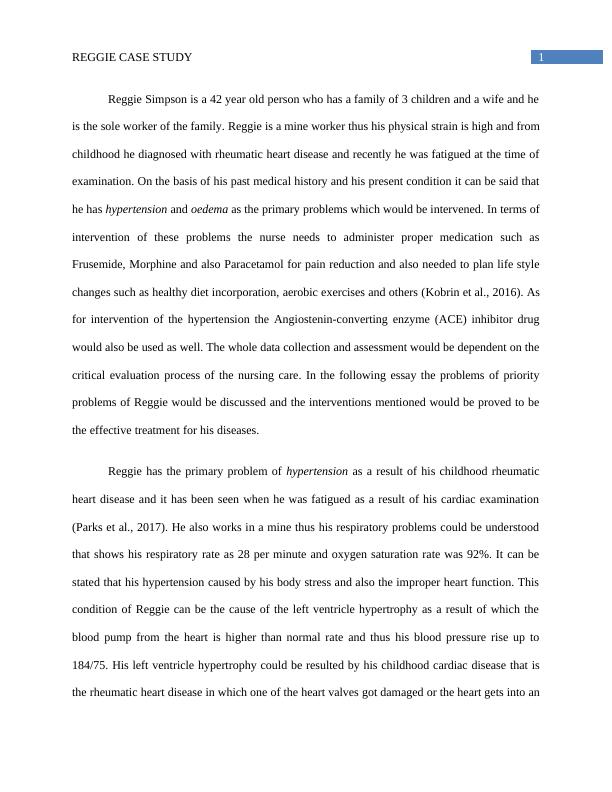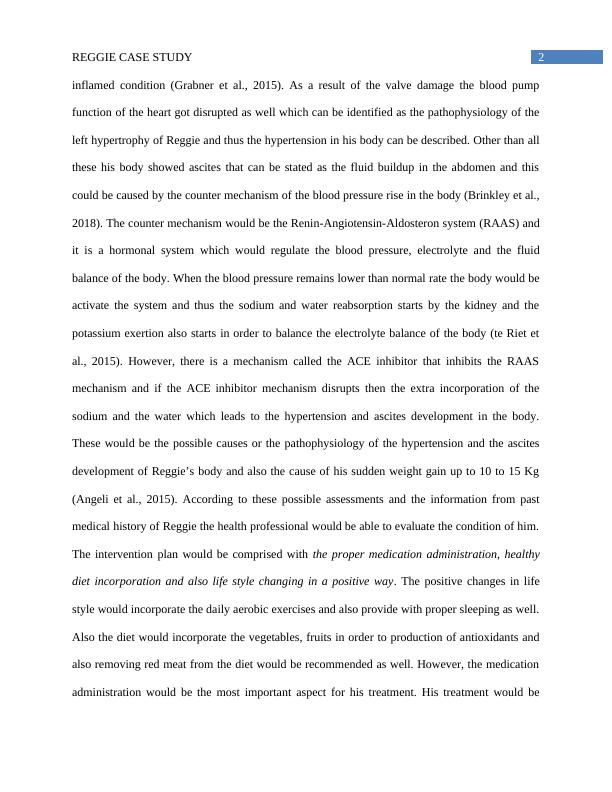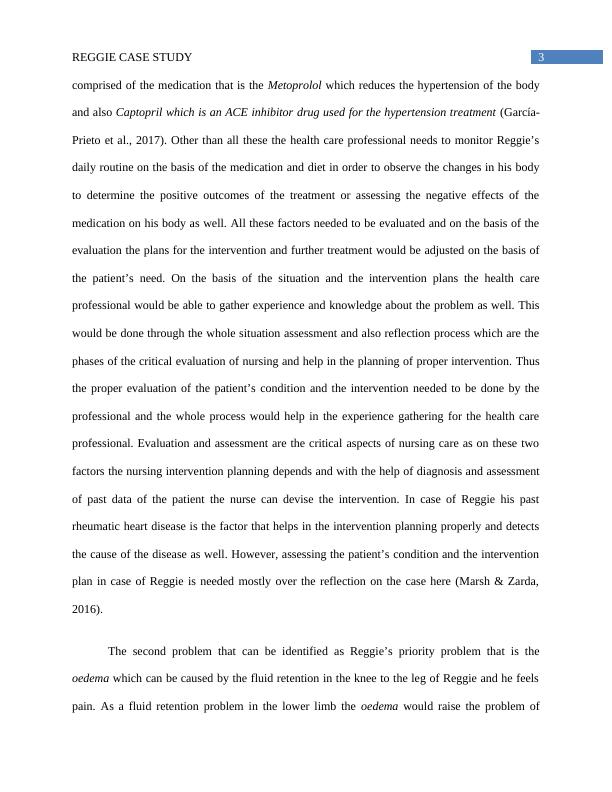Reggie Case Study
Using the clinical reasoning cycle to assess and plan for priority problems in healthcare.
11 Pages3345 Words37 Views
Added on 2022-12-22
About This Document
This case study discusses the primary problems of Reggie, a mine worker with hypertension and oedema. It explores the pathophysiology of these conditions and suggests interventions such as medication administration and lifestyle changes. The evaluation and assessment process is crucial for devising an effective intervention plan.
Reggie Case Study
Using the clinical reasoning cycle to assess and plan for priority problems in healthcare.
Added on 2022-12-22
ShareRelated Documents
End of preview
Want to access all the pages? Upload your documents or become a member.
Case Study Analysis: Nursing Management of Heart Failure and Cardiogenic Pulmonary Edema
|10
|3684
|82
Nursing Intervention for Rheumatic Heart Failure
|15
|4088
|153
Case Study: Management of Pulmonary Edema and Venous Thromboembolism
|11
|3647
|67
Case Study on Congestive Cardiac Failure
|12
|2528
|357
Clinical Case of Congestive Cardiac Failure
|9
|2192
|343
Case study on Adult Assignment
|12
|3852
|155




